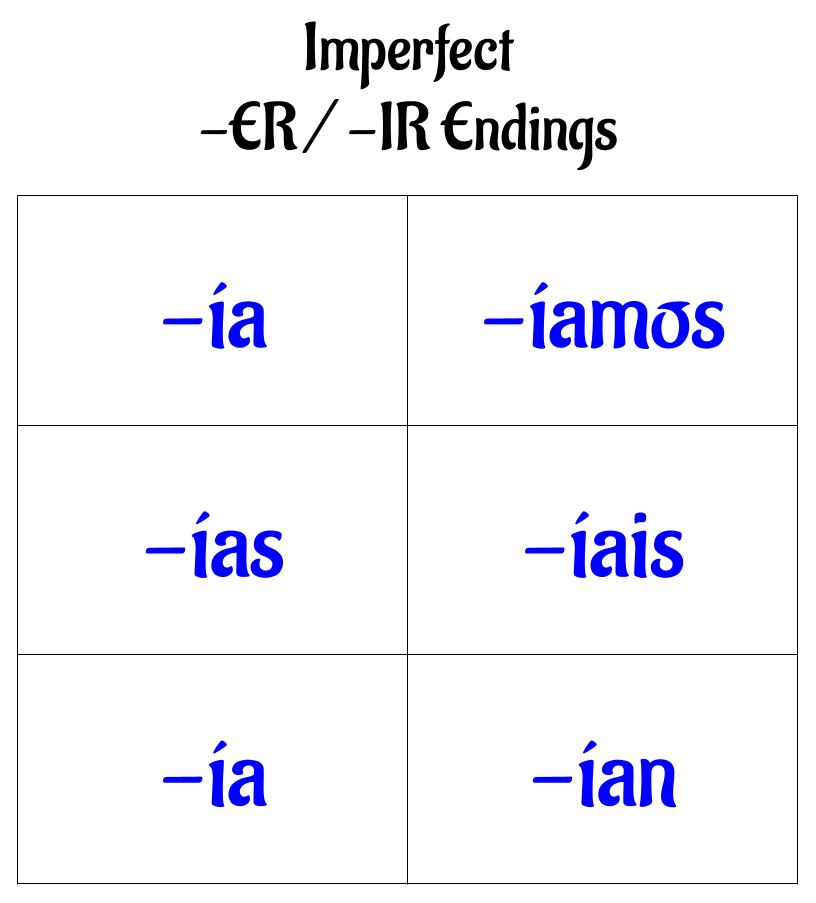El Imperfecto
Here is a video that addresses the Imperfect past tense. Take notes, and then compare them with the notes below to ensure that you understood and captured the important elements.
The Imperfect tense is used to communicate a past action that was in progress (past progressive: an action in the past that is in progress, not completed) “I was eating”, “she was walking” as opposed to “I ate” or “she walked” (Preterite tense...the action is understood as completed). As the preterit moves the story along, marking the passage of time through completed events, the imperfect is the background part of the story. It paints the picture for the audience to give them the idea of reliving the moment so they know what was going on, when specific events took place.
Unlike the Preterite with its many exceptions to remember, the imperfect is much simpler, as it only has -AR endings and -ER/-IR endings and 3 irregular verbs.
To form the Imperfect tense: Drop the AR/ER/IR and use the following endings:
Unlike the Preterite with its many exceptions to remember, the imperfect is much simpler, as it only has -AR endings and -ER/-IR endings and 3 irregular verbs.
To form the Imperfect tense: Drop the AR/ER/IR and use the following endings:
Examples of -AR Verbs
|
|
Yo hablaba con mi mamá cuando mi papá llegó del trabajo.
I was talking to my mom when my dad arrived from work. Ella miraba la televisión mientras hacía su tarea después de la escuela. She would watch TV while she did her homework after school. Nosotros nadábamos en el río cada verano cuando yo era niño. We would go swimming in the river every summer when I was a kid. Mi papá nos conducía a la escuela si el autobús no llegaba. My dad would drive us to school if the bus did not arrive. |
The ONLY 3 Irregulars for the Imperfect
There are only 3 verbs that are irregular in the Imperfect tense. DO NOT USE IRREGULAR PRETERITE STEMS/PATTERNS IN THE IMPERFECT TENSE. In the Imperfect tense, DO NOT use JUUVI stems, stem changers, spell changers, etc. Using Preterite irregular patterns in the Imperfect is a very common mistake. The Imperfect tense is actually a very simple tense to put into form. Other than the 3 verbs below, ALL AR verbs use an ABA ending, and ER/IR verbs use an ÍA ending.
Here is access to StudySpanish.com so you can practice the forms of the Imperfect.





